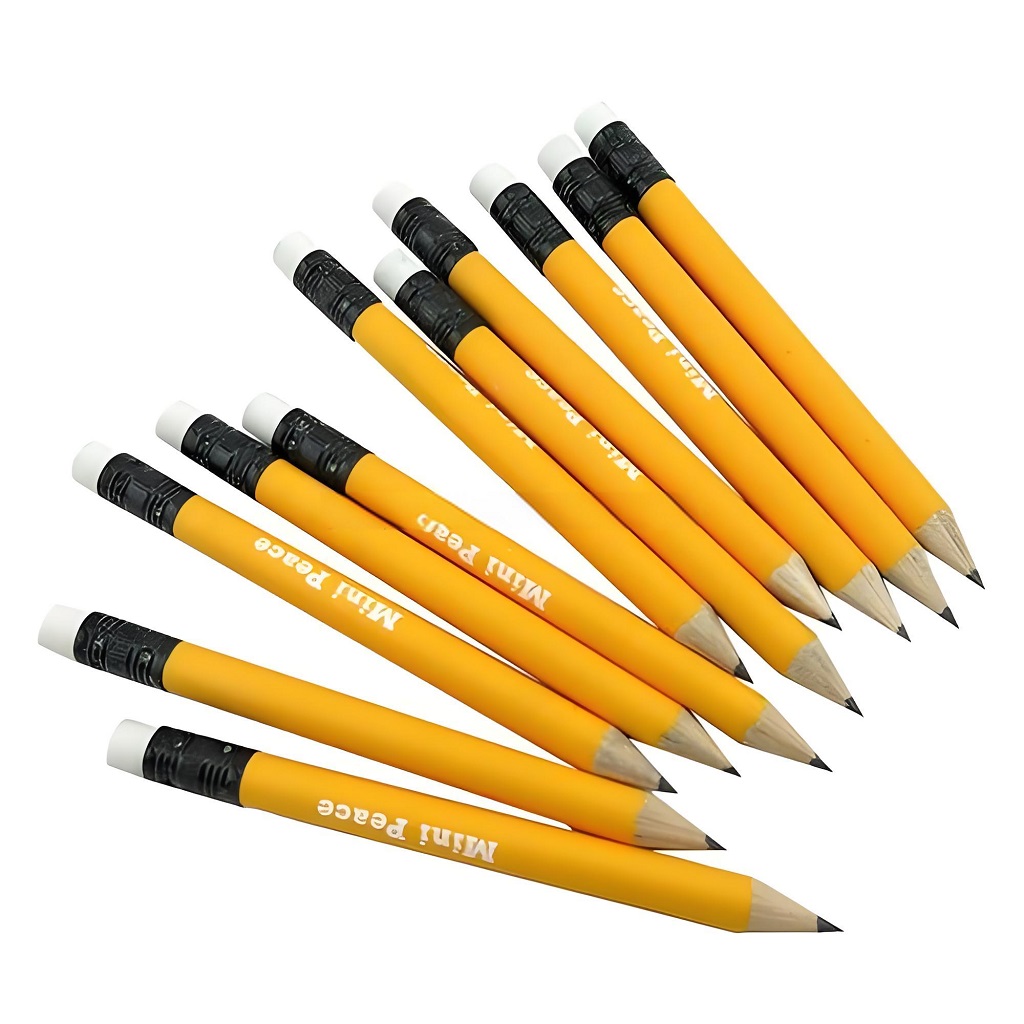Small pencils, typically around 3.5 inches in length with diameters of 10mm or 7.4mm, are versatile tools found in various settings. These compact writing instruments are often used as golf score pencils, temporary writing tools, promotional giveaways, or branded merchandise. Their compact size and practicality make them a beloved choice for many, and in this article, we will explore their unique charm, practical uses, educational and creative applications, and their role in sustainability.

The Unique Charm of Small Pencils
Small pencils, with their petite appearance and practical design, have a unique charm that sets them apart from their standard-sized counterparts. Their diminutive size makes them visually appealing and easy to handle, which can be particularly attractive for children and adults alike. The tactile experience of using a small pencil is different and often more satisfying, as it nestles comfortably in the hand. In the world of stationery, small pencils hold a special place, bringing a touch of nostalgia and simplicity in an age dominated by digital devices.
For example, small pencils are often found in golf courses, serving as essential tools for golfers who need to jot down their scores. Their size makes them easy to carry in a pocket or golf bag without adding unnecessary weight. Additionally, small pencils are commonly used as promotional items. Companies often print their logos on these miniature writing tools, creating a memorable and practical marketing item that potential customers are likely to keep and use.
Practicality and Portability
One of the standout features of small pencils is their portability. These little tools are incredibly easy to carry around, fitting effortlessly into pockets, purses, or even wallets. This makes them ideal for a variety of everyday and professional situations. Whether you’re jotting down quick notes in a meeting, sketching a sudden burst of inspiration, or marking measurements on a construction site, small pencils prove to be indispensable.

In educational settings, small pencils are often preferred for young children who are just learning to write. Their smaller size is easier for little hands to grip, promoting better writing posture and control. Moreover, their compact nature means they are less likely to break compared to full-sized pencils, reducing waste and the need for frequent replacements.
Additionally, small pencils are gaining popularity as versatile tools for temporary writing tasks. For instance, shoppers might use them to quickly note an item on their grocery list, and they are also handy for marking ballots during elections. Their convenience and practicality make them a go-to choice in various scenarios.

Educational and Creative Uses
Small pencils are not just practical; they also play a significant role in education and creative activities. In classrooms, they are often used as introductory writing tools for young children. Their manageable size helps kids develop fine motor skills as they learn to write and draw. Teachers and educational experts appreciate the ergonomic benefits of small pencils, which can aid in the development of proper handwriting techniques.
These miniature pencils also encourage creativity. Artists and designers often use small pencils for sketching and preliminary drawings. Their portability allows for spontaneous creativity, enabling artists to capture their ideas on the go. Furthermore, small pencils are popular in adult coloring books, providing a precise and controlled coloring experience that larger pencils may not offer.
Educators and parents alike recognize the value of small pencils in fostering creativity. By providing children with these tools, they encourage self-expression and imaginative play. An interesting case is the inclusion of small pencils in art kits designed for young learners, which often feature a variety of colors and shades to inspire artistic exploration.
Sustainability and Eco-Friendliness
In today’s environmentally conscious world, small pencils have an advantage when it comes to sustainability. Their smaller size means they use less wood and other materials in their production, reducing their environmental footprint. Furthermore, many small pencils are made from recycled or sustainably sourced wood, contributing to conservation efforts.
Using small pencils can also help minimize waste. As they are often more durable and less prone to breaking, they tend to last longer than traditional pencils. This longevity means fewer pencils are used and discarded, promoting a more sustainable use of resources.
The trend towards sustainability is evident in the market as well. Companies like
Durzerd
and
CPencils
offer eco-friendly options for short pencils, providing consumers with choices that align with their environmental values.
In conclusion, small pencils are more than just miniature writing tools. They offer a blend of charm, practicality, and sustainability that makes them a valuable addition to any stationery collection. Whether used for educational purposes, creative projects, or simply jotting down notes, their utility is undeniable. As the demand for eco-friendly and practical stationery continues to grow, the humble small pencil is poised to remain a favorite among users of all ages.



